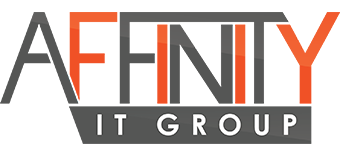3 Data Protection Tips That Will Save Your Business
A couple of years ago, on a vacation to San Francisco I took three days worth of the most beautiful pictures you can imagine on a pretty sweet Nikon camera. And then my camera was stolen from my rental car. And so were the pictures. Forever. In a nutshell: I failed at data protection.
For my casual vacation, I was out the cost of a camera as well as some wonderful, artistic photographs. For your business, you stand to lose a lot more than a few snapshots.
First of all, data loss is ridiculously expensive. A study by Verizon found that just 100 lost records typically costs a company anywhere from $18K-$36K and as much as $555K in some incidents.
Second, your customers don’t tend to stick around when they can’t trust you with their information. In a separate study, 70% of customers discontinued a relationship with a business when their data was compromised.
Without loyal customers, a business is likely to go under, with one company reporting that 60% of small businesses close after a serious cyberattack.
With all of this in mind, let’s take a look at 3 ways to stay a few steps ahead of the hackers and cyber attackers. It’s time to protect your data and the success of your business.
1. Cybersecurity
Remember the scene from Mission Impossible where Tom Cruise is rappelling from a rope, trying hard not to sweat and set off the temperature controls in one of the world’s most well-guarded rooms?
Yeah, that’s the kind of security you want for your data. Except, you don’t even want Tom Cruise to get so far as to hang from the rope.
You want to make it as difficult as possible for attackers to infiltrate your network.
The most valuable thing you can do to secure your network is to implement solid cybersecurity measures specific to your business needs. The cybersecurity efforts you utilize should not be cookie-cutter. There is no magical package that is perfect for every business.
It’s always smart to work with professionals who can study your network strengths and weaknesses and then optimize them one-by-one. For instance, if your network filters are allowing employees to access websites laden with malware, this presents a significant risk worth targeting.
Tip #1: Cybersecurity is the first line of defense against cyberattacks. Make sure you have the best cybersecurity solution for your unique business.
2. Cloud Solutions
Remember my stolen camera? Well, what if it just broke? I’d still be remembering my vacation without my camera and my pictures.
In the USA, approximately 140,000 hard drives fail every week, and 29% of those failures are caused by accidents. One of the best ways to protect against losing data when your hardware inevitably craps out–because nothing physical lasts forever–is to backup your data in the cloud.
The chances are that your business already uses the cloud in some way. You’re not alone. 90% of businesses do the same. The question is whether you are fully utilizing all that the cloud has to offer?
Tip #2: Make sure that you work with your MSP to create a plan to schedule regular backups in the Cloud. This will ensure that even when your computer or server goes kaput, your data survives.
3. Network Monitoring
Even with the best cybersecurity and cloud solutions, anomalies happen. And when they do, you will want to know as soon as possible. If you miss a sneak attack and your network shuts down without warning, you are risking losses of up to $100,000 per hour.
The best way to keep track of your network activity is to…keep track of your network activity. To do that, we suggest network monitoring. Make sure to work with a managed services provider who can provide 24/7 monitoring of your network. Full monitoring is the only way that technicians are able to catch and stop or mitigate attacks before they do serious damage.
I would have appreciated a security guard sitting inside my rental car when my camera was stolen. He might have taught those thieves a good thing or two about good behavior and other people’s property. And I wouldn’t have had to buy a new camera.
Tip #3: Work with your managed services provider to create a network monitoring plan that works for your operational requirements.
How to Use These Tips in Your Business
If you’re wondering how you can implement these practices and tools in your business, then you’ve already taken the first step to making your business safer and secure for growth into the future.
When you’re ready to learn how to partner to protect your business, give us a call.











